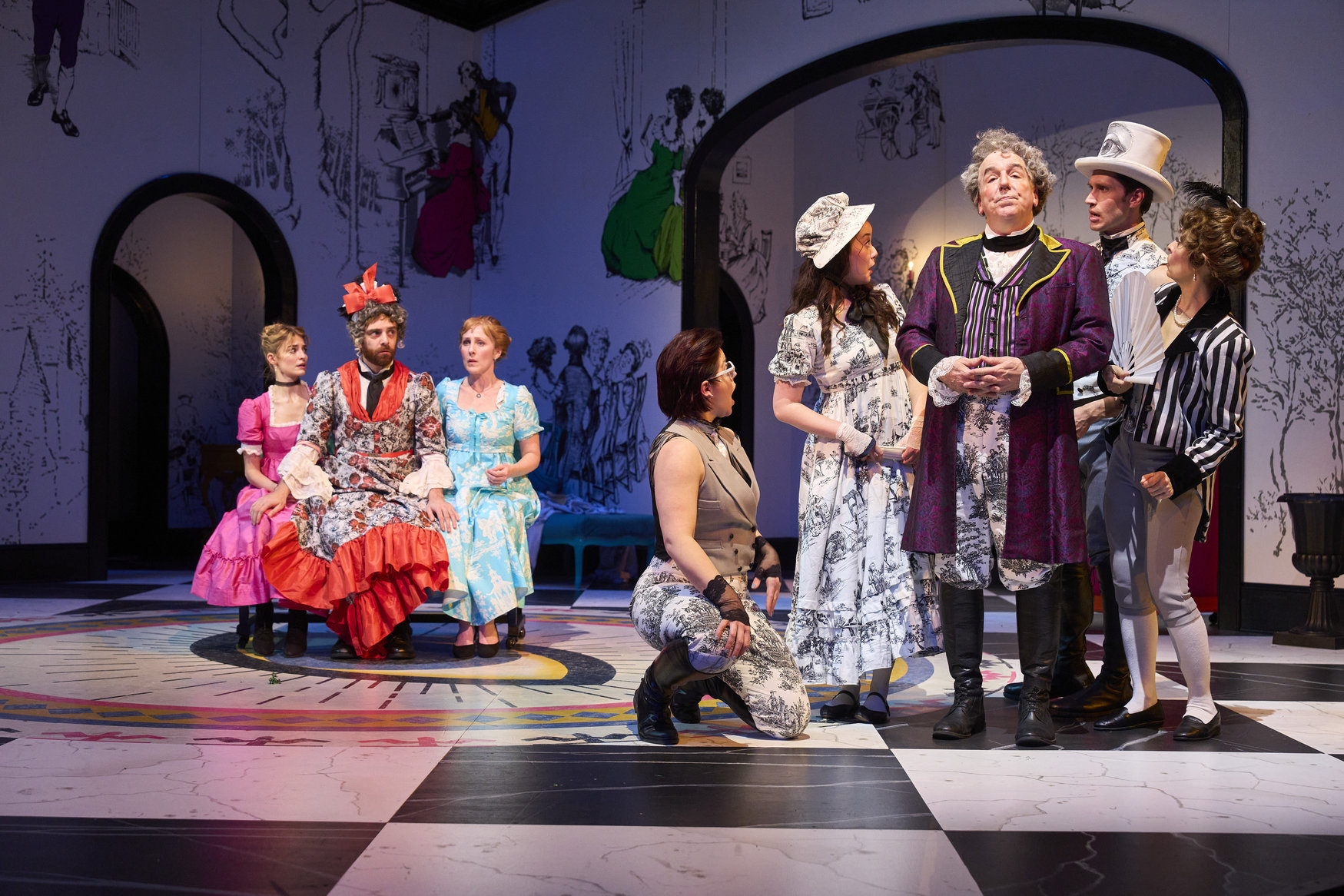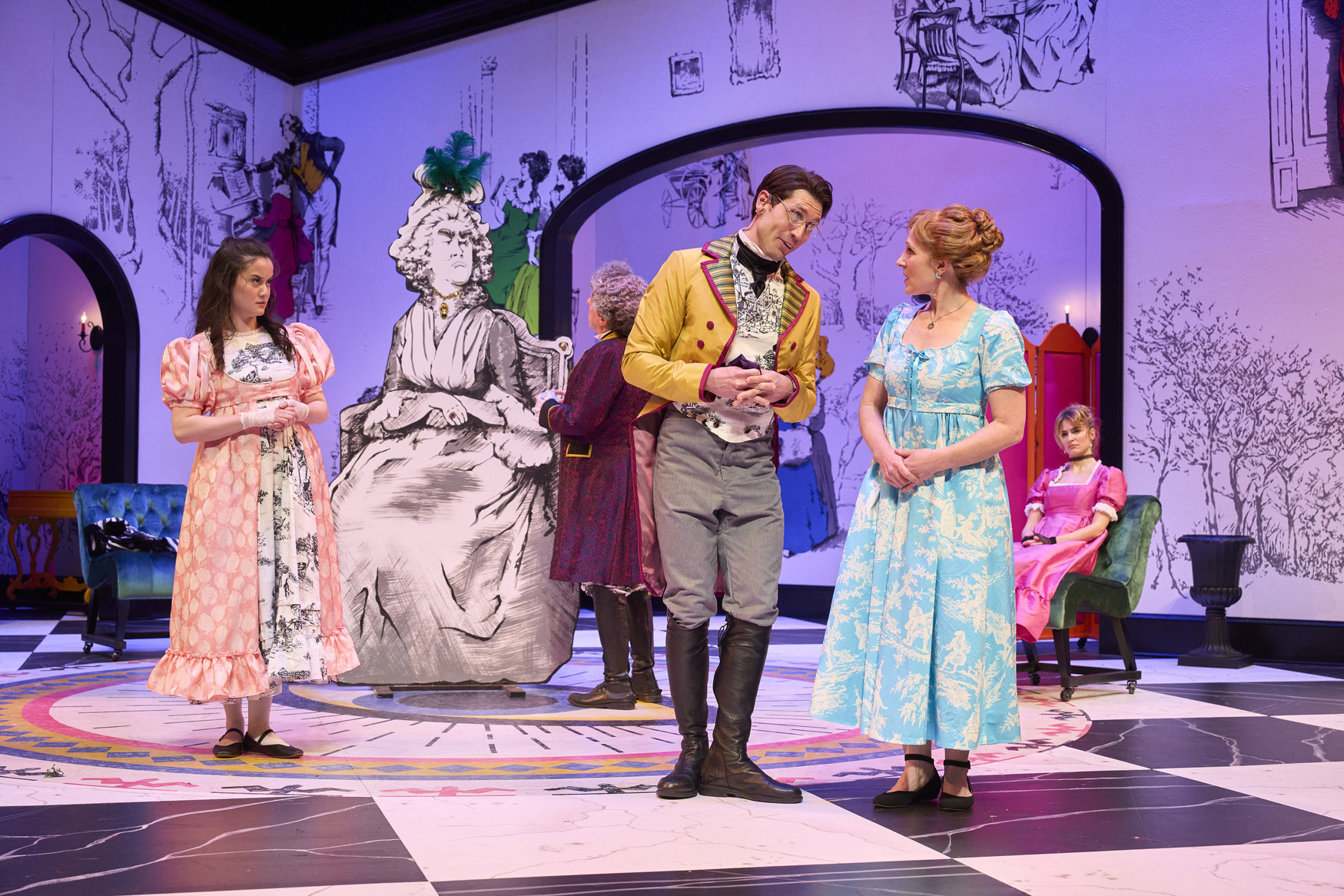
Kate Hamill has written the play version of Jane Austen’s 1811 novel Sense and Sensibility with a keen ear to the language and attitudes of the day, but with an addition of humor, not present in the original Austen work.
As was true of Austen and her co-writers of the Regency time period, they developed their publications to reflect the lack of independence for women. The major theme was that the financial future of women was solely dependent on the economic status of their fathers or husbands. They could own no property and the class system, purely based on economics, put each woman in their slot. No money, no respect!
The playful new adaptation of Jane Austen’s beloved novel follows the fortunes (and misfortunes) of the Dashwood sisters after their father’s sudden death leaves them financially destitute and socially vulnerable. Set in gossipy late 18th-century England, Sense and Sensibility examines reactions, both reasonable and ridiculous, to societal pressures. An unfair situation where reputation is everything, yet each woman was unable to control her narrative.
Hamill’s play premiered off-Broadway in 2014. It was met with critical praise, with such comments including “an unconditional delight,” “invigorating” and “perhaps the greatest stage adaptation of this novel in history.”
Does the GLT’s reach the levels of the off-Broadway production? Absolutely! It is one of the best productions that theatre has staged.

The purpose of the overture to a musical is to set the expectations and mood of the audience for what is to come. In the case of the farcical Sense and Sensibility, Courtney O’Neill’s whimsical set serves the same purpose. The cartoonish drawings that cover the white walls scream “fun” and fun is exactly what the creative combined directing of Sara Bruner and Jacklyn Miller garners. Paul James Prendergast’s music and Mieka van der Ploeg’s costumes add to the purposeful whimsiness.
Farce is one of the hardest forms of theater to stage. Most directors don’t know how to develop the ideas and not play funny just to play funny. The actors tend to ham it up, overdoing, not fulfilling the purpose of sticking to the author’s intent and purpose. Instead, they play for laughs, losing the play’s theme.
That is not the case with Bruner and Mille’s direction. And this is a cast who knows exactly how to play farce — realistic yet exaggerated, not losing the play’s purpose by being outrageously funny, for the sake of getting laughs.
The cast of eight plays 17 roles. This is accomplished by having all but two cast members play multiple parts, along with some very clever costuming and voice and accent changes.
Maggie Kettering develops an Elinor Dashwood, the eldest of the sisters, as an intelligent, sensible, practical, kind, reserved and self-contained young lady. In contrast, Angela Utrera creates a Marianne who embraces spontaneity, and romantic idealism. She is the emotional sister while Elinor is the logical one. They each nail the persona of the woman who Auston created.
The rest of the cast includes Joe Wegner, Hanako Walrath, Vima Silva, Nick Steen, Laura Welsh Berg, and M.A. Taylor are excellent in each of their roles. They work as a well-oiled machine to create a cohesive production.

Capsule judgment: Sense and Sensibility is a delight. The well-directed cast, supported by the purposeful technical aspects of the production, not only makes this a wonderful theatrical production, but creates a staging that has to rank with the best shows Great Lakes Theatre has created. This is one show that actually deserves the curtain call that the show is nightly getting.
Sense and Sensibility runs at the Hanna Theatre through Sun March 5. For tickets go to greatlakestheater.org/ or call 216-241-6000